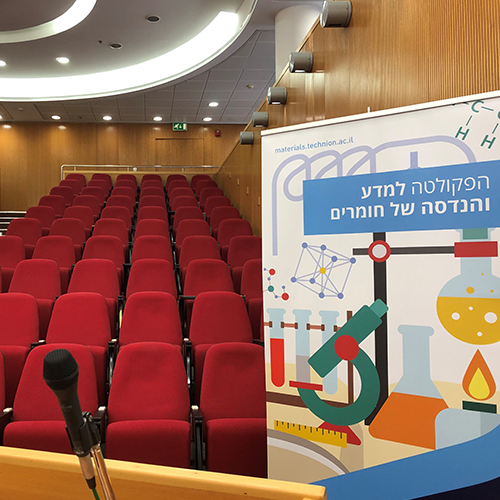
Mr. Yizhou Wang – M.Sc. Candidate
28/09/2025
Zoom
13:30 - Jerusalem time / 18:30 - Beijing time
Graphite, conventionally used for Li-ion battery anodes, provides a relatively low energy density. On the other hand, Si-based anodes are a promising alternative, offering ×10 higher capacity; however, they suffer from pulverization and continuous solid-electrolyte interface growth due to extremely large volumetric changes during cycling. To prevent such problems, an innovative approach is being explored in this work involving intercalating metallic nanoparticles (NPs) inside and on top of sculptured Si thin films. Such anodes can accommodate substantial amounts of Li ions, while benefitting from the large surface-to-volume ratio and high electrical conductivity of the NPs. The fabrication of the anode electrode consists of NP deposition on a suitable support, followed by growth of a columnar α-Si film with a controlled thickness, exploiting the shadowing effect of the NP scaffold. The two-step fabrication sequence may be repeated multiple times, as necessary. In this seminar we focus on the fabrication of the scaffolding via deposition of NPs using a DC magnetron-sputtering inert-gas condensation apparatus. Various deposition parameters (NP species, size, and coverage) are investigated via mass spectrometry, and electron microscopy, enabling structure optimization with optimal electrochemical performance. Such multi-layered sculptured thin films may guarantee mechanical stability, while reversibly accommodating a high volume of Li-ions.


